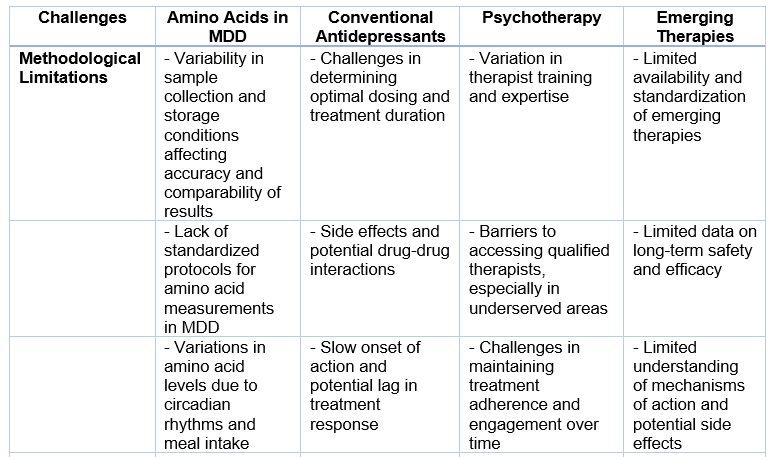Plasma amino acids in major depressive disorder
between pathology to pharmacology
DOI:
https://doi.org/10.17179/excli2023-6767Keywords:
major depressive disorder (MDD), plasma amino acids, pathophysiology, biomarkers, tryptophan metabolismAbstract
Addressing the formidable challenge posed by the development of effective and personalized interventions for major depressive disorder (MDD) necessitates a comprehensive comprehension of the intricate role that plasma amino acids play and their implications in MDD pathology and pharmacology. Amino acids, owing to their indispensable functions in neurotransmission, metabolism, and immune regulation, emerge as pivotal entities in this intricate disorder. Our primary objective entails unraveling the underlying mechanisms and unveiling tailored treatments through a meticulous investigation into the interplay between plasma amino acids, MDD, and pharmacological strategies. By conducting a thorough and exhaustive review of the existing literature, we have identified pertinent studies on plasma amino acids in MDD, thereby uncovering noteworthy disturbances in the profiles of amino acids among individuals afflicted by MDD when compared to their healthy counterparts. Specifically, disruptions in the metabolism of tryptophan, phenylalanine, and tyrosine, which serve as precursors to essential neurotransmitters, have emerged as prospective biomarkers and critical contributors to the pathophysiology of depression. Amnio acids play an essential role in MDD and could represent an attractive pharmacological target, more studies are further required to fully reveal their underlying mechanisms.

Downloads
Published
How to Cite
Issue
Section
Categories
License
Copyright (c) 2024 Omar Gammoh, Alaa Aljabali, Murtaza M. Tambuwala

This work is licensed under a Creative Commons Attribution 4.0 International License.
Authors who publish in this journal agree to the following terms:
- The authors keep the copyright and grant the journal the right of first publication under the terms of the Creative Commons Attribution license, CC BY 4.0. This licencse permits unrestricted use, distribution and reproduction in any medium, provided that the original work is properly cited.
- The use of general descriptive names, trade names, trademarks, and so forth in this publication, even if not specifically identified, does not imply that these names are not protected by the relevant laws and regulations.
- Because the advice and information in this journal are believed to be true and accurate at the time of publication, neither the authors, the editors, nor the publisher accept any legal responsibility for any errors or omissions presented in the publication. The publisher makes no guarantee, express or implied, with respect to the material contained herein.
- The authors can enter into additional contracts for the non-exclusive distribution of the journal's published version by citing the initial publication in this journal (e.g. publishing in an institutional repository or in a book).





